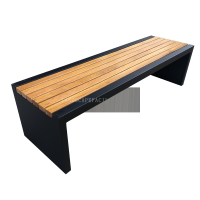Welcome to the website for landscape facilities products and knowledge.
How does the inclusion of a built-in smoker or barbecue affect the ventilation needs of a landscape bar counter?
The integration of a built-in smoker or barbecue unit into a landscape bar counter fundamentally transforms its ventilation requirements. Unlike standard outdoor cooking stations, these permanent installations demand specialized airflow management to ensure safety, comfort, and functionality. The combustion processes and smoke generation inherent to smoking meats create unique challenges that standard outdoor kitchen ventilation cannot adequately address.
Primarily, the ventilation system must combat intense heat buildup and smoke dispersion. Professional outdoor range hoods with higher CFM (cubic feet per minute) ratings become essential—typically requiring 600-1200 CFM compared to standard outdoor kitchen hoods. The hood should extend at least 6 inches wider than the cooking surface on all sides to effectively capture rising smoke and grease particles. Additionally, the ductwork must be constructed from heat-resistant materials like stainless steel and maintain a straight, vertical path to exterior venting to prevent grease accumulation and maintain airflow efficiency.
The architectural integration poses another layer of complexity. Landscape bar counters often incorporate combustible materials like wood or synthetic polymers near the cooking zone. Building codes typically mandate non-combustible clearance zones—usually 6-12 inches around heat sources—which must be factored into the design using materials like granite, metal, or tile. Furthermore, the ventilation system must account for wind patterns and outdoor air currents that can disrupt smoke extraction, often requiring wind-resistant hood designs or adjustable baffles.
Electrical requirements also increase significantly. High-power ventilation systems need dedicated circuits, while built-in smokers themselves may require 240V outlets. The combined power draw necessitates careful electrical planning to avoid circuit overloads. For gas smokers, proper gas line sizing and shut-off valve accessibility become critical safety factors alongside ventilation.
Maintenance protocols intensify with integrated smokers. Grease management systems need frequent cleaning—often weekly with heavy use—to prevent fire hazards. Stainless steel grease traps and removable drip pans should be incorporated for easier maintenance. The ventilation filters require durable, washable materials capable of handling heavier grease loads than standard kitchen filters.
Ultimately, successful integration demands balancing aesthetic goals with mechanical requirements. While homeowners seek seamless designs that blend cooking and entertainment spaces, the ventilation system must remain the priority to ensure safety, prevent smoke nuisance, and comply with local building codes. Professional consultation with HVAC specialists and outdoor kitchen designers is strongly recommended to create a functional, safe, and enjoyable outdoor cooking environment.
Related search:

Recommendation
Modern Stainless Steel Begonia Wood Park Chair Outdoor Courtyard Leisure Sun Protection Bench Long Seat